CERTIFIED DIAMOND MYTHS
LEARN THE MYTHS AND MISTRUTHS ABOUT CERTIFIED STONES
This post contains affiliate links. If you use these links to buy something I may earn a commission. Thanks! As an Amazon Associate I also earn from qualifying purchases.
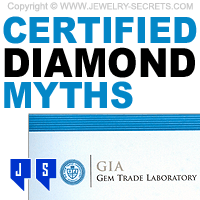
A girl walks into a jewelry store to buy a certified diamond (only because she hears those are the types of diamonds you should look for). The salesperson brings out a loose diamond and is showing her how it sparkles in the light.
“Is this a good diamond?” the girl asks.
“Of course,” says the salesperson “It’s certified!“
And by “certified“, it means, to come with a diamond report. “Diamond report” is the official name given to diamonds with laminated grading reports, but more customers, and most jewelers still call them “certificates”.
Certification myths:
There are so many myths and mistruths about certified diamonds, so I’ve decided to set the record straight. See if any of these fabrications sound familiar to you…
Myth #1…
Certified diamonds are good diamonds:
FALSE! Any quality of diamond can be certified. Even the lowest clarity there is; I3 clarity. You could have an I3 diamond with M color (strong yellow hue) certified just like you could a VVS1, D diamond (one of the best there is, like these diamonds here).
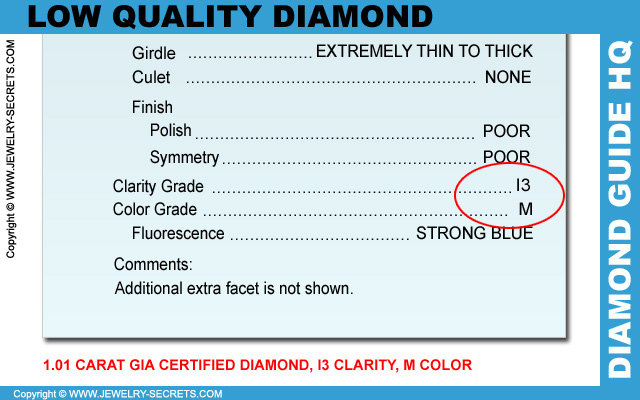
So just because it’s certified, doesn’t mean it’s good.
Certified diamonds are better than non-certified:
FALSE! Just because it has a certificate (cert) attached to it, doesn’t make it a better diamond.
A loose non-certified diamond with a VS2 clarity, F color is far better than a certified diamond of SI2, I color… See image below.
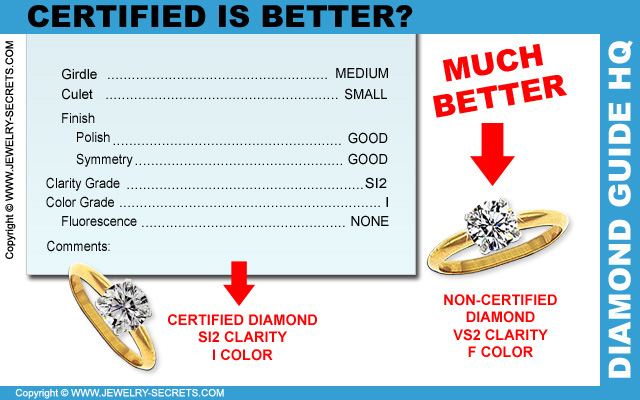
It has nothing to do with the official paperwork. It’s all about the true quality of the diamond. You don’t need paperwork to be higher in clarity or color. The paperwork only confirms that quality. That’s all!
A better stone is a better stone.
Certified diamonds guarantee price:
FALSE! In fact, no certs guarantee price. Certificates have nothing to do with price. Most certification companies won’t even list price on their reports (and they shouldn’t). They want nothing to do with price. They only want to list exactly what the diamond quality is.
I agree! I say leave it up to the stores to decide what they want to sell it for. Plus, the diamond market fluctuates all the time. Prices rise and fall due to inflation and the economy. Prices can change. Only time will tell…
All certificates are the same:
FALSE! That’s like saying all cars and all houses are the same. It’s not the case.
Diamond certification companies could be more lax in their grading than others. Most gem laboratories use the GIA grading system to grade their stones with, but many don’t have the expertise, experience, talent or equipment to give as accurate a report as GIA strictly adheres to.
Jewelers may sell different certificates, but if you ask the people in the industry who they think is the best, they will almost always say GIA. Hands down!
All certificates use the same grading system:
FALSE! Even though jewelers teach everyone about the 4C’s:; Cut, Color, Clarity and Carat Weight, as devised by GIA back in the early 1950’s, some certification companies grade your diamonds with a number scale as in the picture below. Do note that they also compare it to the GIA equivalent grading scale.
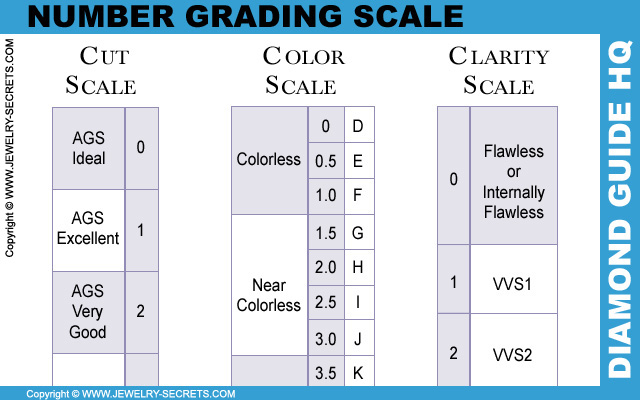
Another certification company changes the clarity grades scale and adds in an extra clarity grade: SI3 clarity.
SI3 clarity:
SI3 clarity is supposed to be the buffer between SI2 diamonds and I1 clarity diamonds…
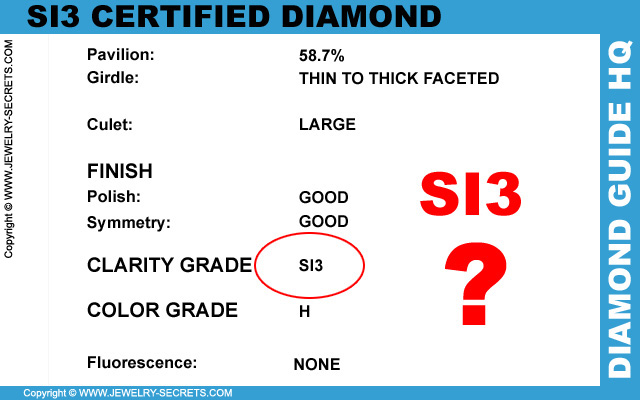
These extra ratings, numbers and grades make it harder for customers to compare diamonds.
That’s why I always advise buying GIA certified diamonds. GIA wrote the book. There’s nobody better to grade your diamonds than the people who set the standards.
Certificates don’t need to be appraised:
FALSE! You should always get your diamond ring appraised for insurance purposes.
Certificates like GIA do not list a replacement value of the diamond, and even if they did, it wouldn’t be enough. That diamond is not loose anymore, it’s in a mounting.
This means that both the diamond and the ring will have to be appraised together with all the qualities listed and a full value assessed on the ring so you can get it covered.
Every time I appraise a diamond ring for a customer, I put right on the appraisal the certificate number along with a copy of the actual certificate. It makes insuring the ring easy. Plus, a lot of insurance companies insist on it. :)
Certificates guarantee quality:
FALSE! The first line in the disclaimer of a GIA certificate states: “This report is not a guarantee, valuation or appraisal“.
It goes on to say that it only contains the characteristics of the diamond graded, tested, examined and analyzed by GIA under 10x magnification.
It further states that you should consult a credentialed jeweler about the importance and interrelationship of Cut, Color, Clarity and Carat Weight!
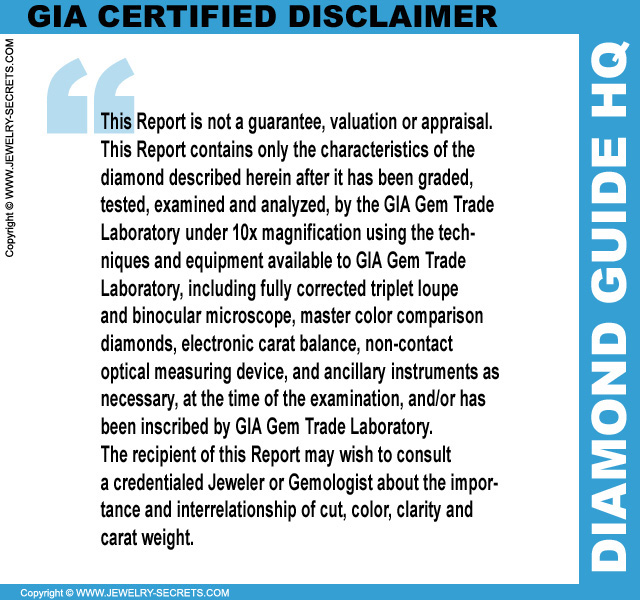
In other words, there are no guarantees in life. Nothing is every fully guaranteed, and that’s because man is involved. Humans make mistakes and errors. It’s just a fact.
Who could argue with that?
Certificates list everything wrong with the diamond:
FALSE! If the culet is off center, it won’t be listed (although it will be a part of the final symmetry grade).
If the table is lopsided, that won’t be listed.
If there’s a trigon on the natural, that probably won’t be listed either.
Not every detail is put on the certificate, nor does everything have to. It just complicates things (it’s like listing every mole, freckle, and blemish on your body).
If every dot and detail was listed, the cert could be a mile long. People would get confused and never be able to compare apples to apples.
Certificates list the most important features of the stone and gives you a final grade to make reading and understanding the report simple.
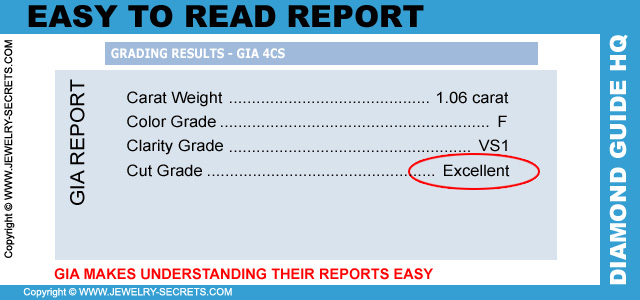
ALL flaws are shown on the diamond plot:
FALSE! Not every minute dot and pinpoint will be shown. Some extra facets, naturals, twinning wisps and clouds may not be shown. Some grain lines, polish marks or bearded girdles may not be shown either.
Plus, it may even list things like extra etchings or engravings on the diamond girdle, like a branded diamond or trademarked diamond would have.
These things may be reserved for the comments section of the diamond report, like in the examples below…
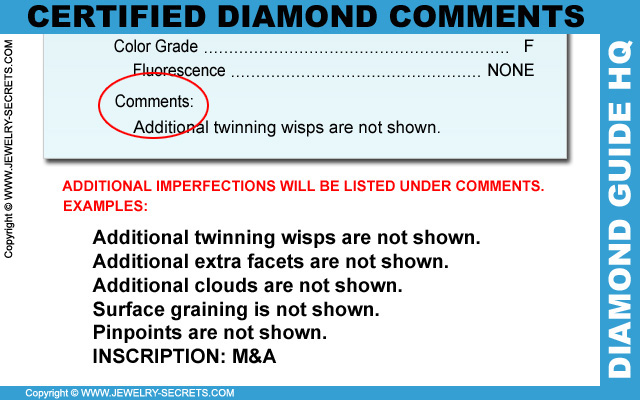
The date on the certificate doesn’t matter:
FALSE! The date on the certificate does matter. Things with the diamond may have changed since the certification date. It could have been chipped, nicked or cracked.
Just looking at the paperwork isn’t good enough. You’ll need to microscope or loupe the stone and check the girdle edges, facets and culet of the stone. Check for damage that may have occurred since the last certification date.
If new abrasions, fractures or breaks have developed, that diamond will need to be re-appraised and re-certified.
Chances are the new damage (if any) will affect the clarity and quality of the diamond and bring the value of the stone down.
So if you’re looking to purchase a diamond with an older certificate (more than 5 years old), make sure you scope it very, very well.
All diamonds are laser inscribed:
FALSE! Probably only about 1/2 of the diamonds that are certified are also laser inscribed (it lists right on the report if the diamond is laser inscribed or not)…
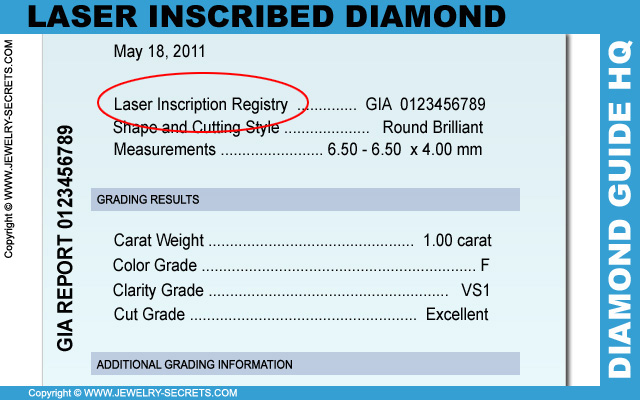
There has been a lot of debate about laser inscriptions and whether or not they affect the clarity of the diamond. After all, they are adding flaws and maring the diamond girdle with etchings…
As of now, laser inscriptions do not affect quality and as long as certification companies continue to burn the report number right onto the edge of the stone, I’m sure it never will.
Still, usually only about half the stones (1/2 carat or larger) are inscribed (mostly because of the added cost. READ: The cost to certify a stone).
You can view these etchings under a microscope or a 10x jeweler’s loupe and compare the inscription to the report number on your certificate. They should always match.
Laser inscribed diamonds are the best way to protect your diamond from diamond switching. It proves the diamond is yours. Numbers do not lie!
I would also always advise one to purchase a certified diamond loose versus mounted. Buy the stone loose and have it set later. That way you can check the stone for chips, damage and inclusions that a mounting may hide.
Get used to viewing your diamond and ring under a scope… You can never be too sure.
Because, as we all know… There are no guarantees in life!
Check out the great deals on GIA certified diamonds here.
Cheers! :)


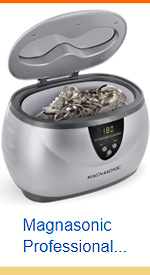

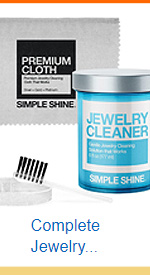
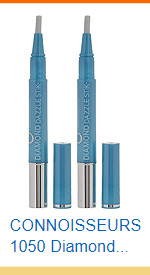
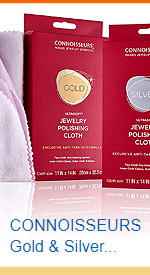
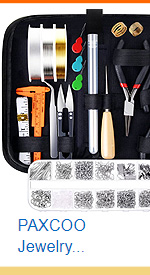
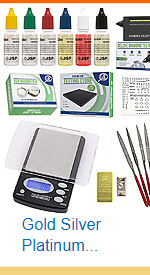
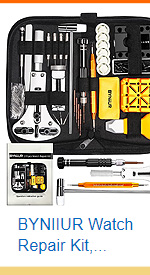
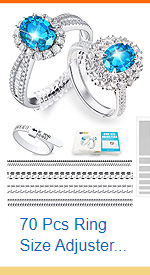
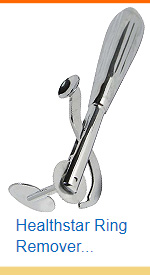
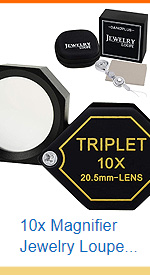
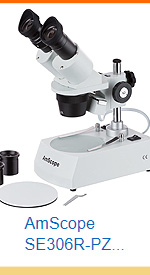




Leave a comment